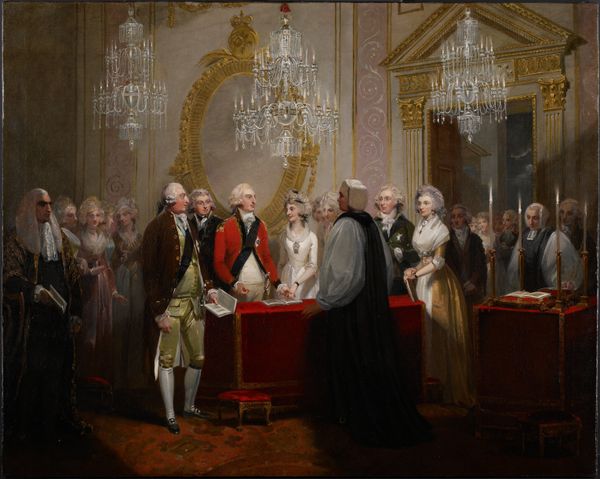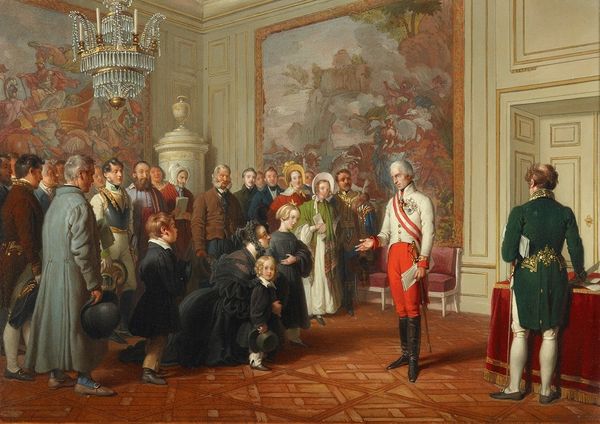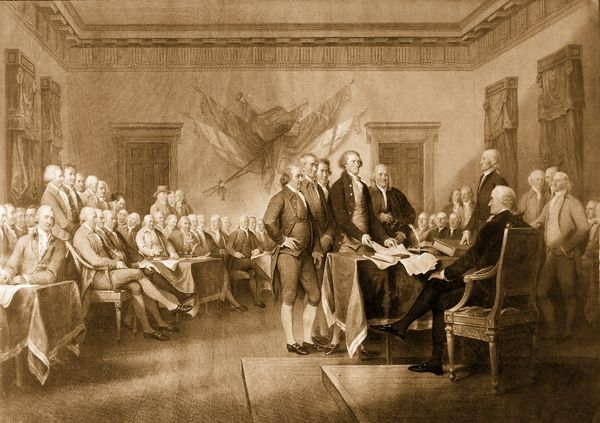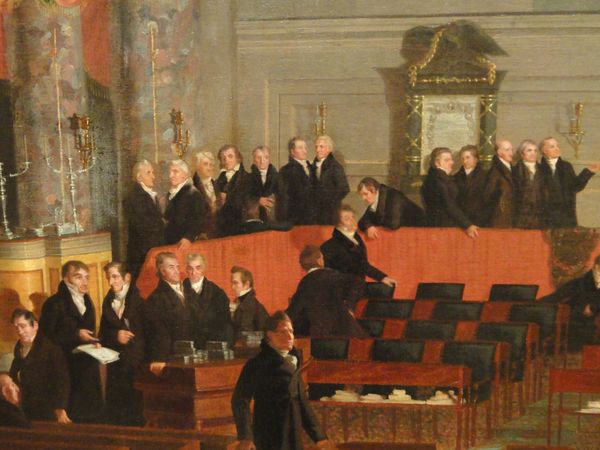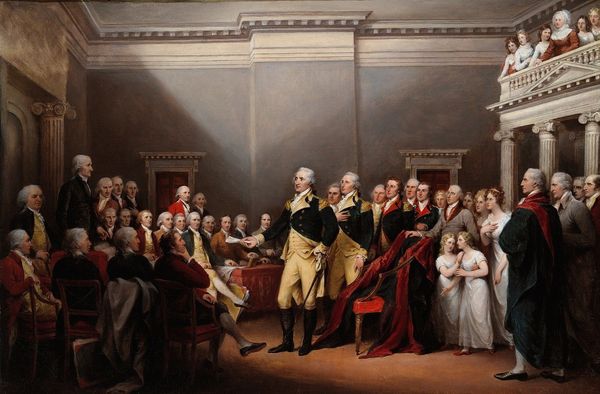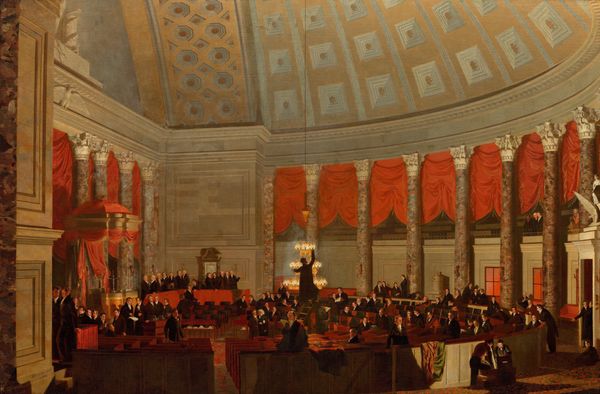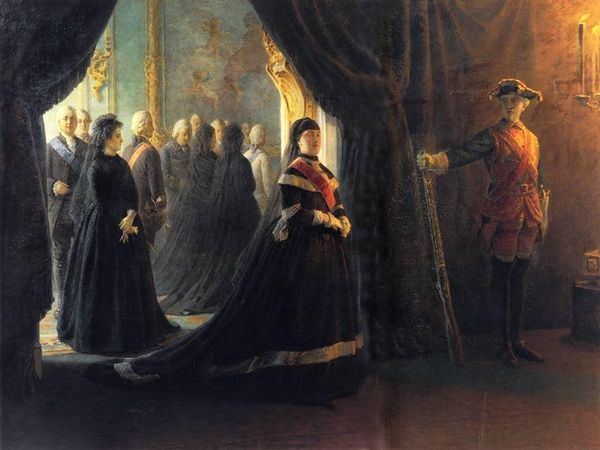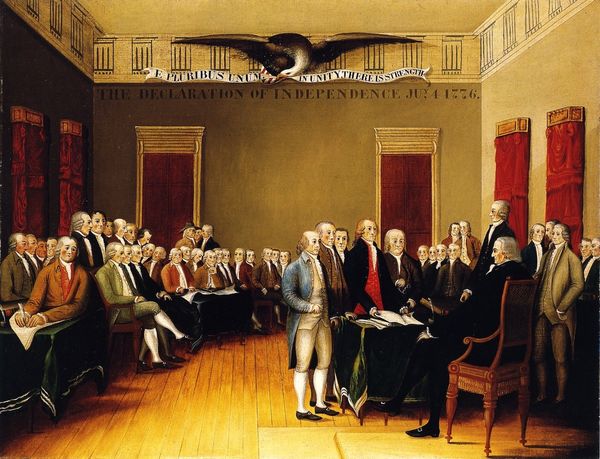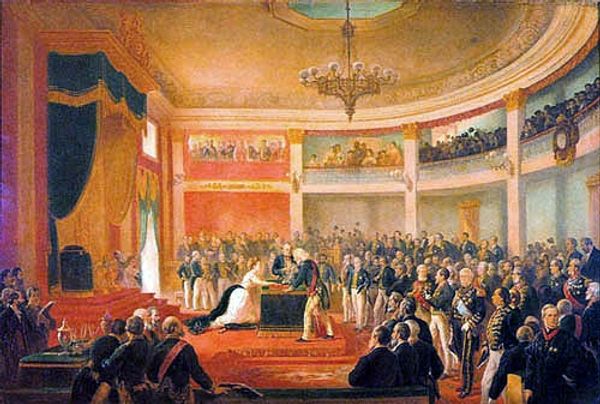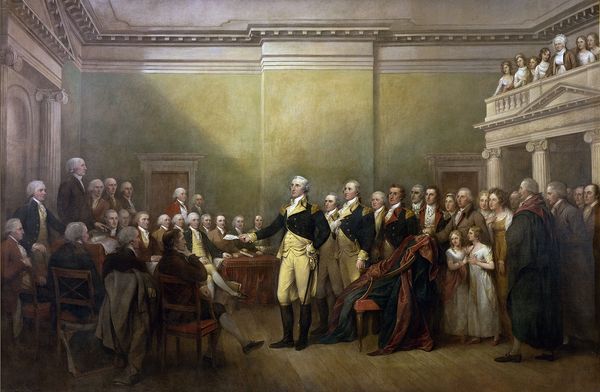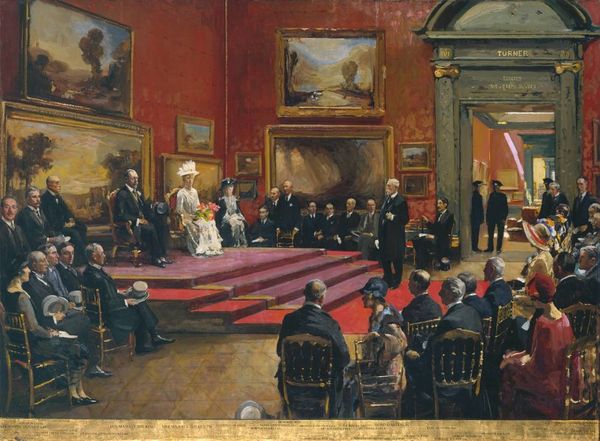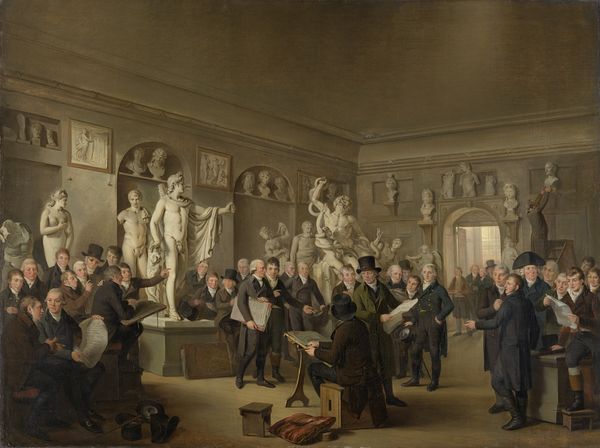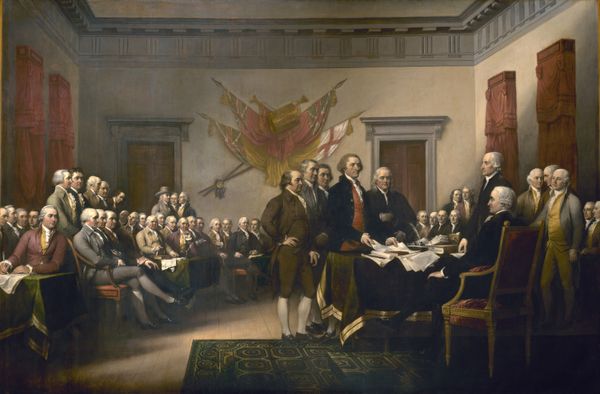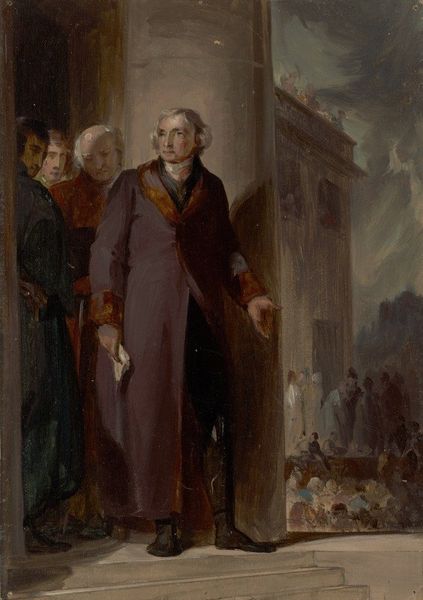
painting, oil-paint
#
figurative
#
painting
#
oil-paint
#
figuration
#
oil painting
#
romanticism
#
genre-painting
#
history-painting
Copyright: Public Domain: Artvee
Curator: This oil painting is titled "Louis-Philippe Swearing In Before The Chambers, August 9, 1830," and was created by Ary Scheffer in 1830. Quite a monumental scene, wouldn’t you agree? Editor: Definitely a crowd scene on a grand scale. It’s mostly dark tones. Feels like an assembly line of people and not like individuals. The stage is the most illuminated portion, what sort of textiles do you think those curtains are made of? Curator: That staging is deliberate. Scheffer’s emphasis on Louis-Philippe literally elevates the man, a key aspect of the July Revolution's aftermath. It was crucial to publicly legitimize his claim. The soft focus on the crowd makes this more about the symbolic act, the institutional theater, if you will, than the individuals involved. Editor: Institution making indeed. So much black attire on all the attendees—clothing practically uniforms of allegiance, reinforcing the power structure visible on the elevated platform. I'm curious about the material production required. How did Scheffer and his studio manage a painting this size while capturing such detail and so many distinct, though dark, individual faces? Curator: Consider that Scheffer himself had strong ties to the Orléanist cause. He strategically crafts the narrative of Louis-Philippe’s accession to power. Note how this genre of historical painting was often commissioned with political aims in mind—art serving as propaganda. Editor: So even the selection of colors— the somber palette, which helps unify the massive crowd visually—could’ve served a strategic function in presenting a solemn, serious front to Louis-Philippe’s regime, a means of controlling perception. Curator: Exactly! And while the clothing of the masses visually recedes, the spotlight highlights not just the key figures but also the spectacle of law itself. In a way, it foreshadows the role of visual media in shaping political legitimacy going forward. Editor: The whole event feels manufactured and performed to achieve an illusion of consensus. Looking closely at the visible textures in the oil paint itself, I see the meticulous layering that went into its making and that reinforces this feeling of deliberate construction. What a testament to the complex work of image making this artwork holds. Curator: Absolutely. It's a visual record of the carefully staged events and how political transitions were sold to the public. Editor: It definitely gave me a lot to think about.
Comments
No comments
Be the first to comment and join the conversation on the ultimate creative platform.
